Dark Tourism in Central Asia
Exploring Dark Tourism Hotspots in Central Asia
Dark tourism in Central Asia offers a compelling journey into the region’s shadowed history, making it an emerging trend for travelers seeking unique experiences. From Soviet-era gulags in Kazakhstan to the eerie remnants of nuclear test sites in Semipalatinsk, Central Asia’s dark tourism destinations provide a rare glimpse into the tragedies, conflicts, and political oppression that shaped the region.
Well know dark tourism sites in Central Asia include abandoned ghost towns, Cold War monuments, and memorials to political repression, drawing visitors interested in history, war tourism, and the hidden stories of the past. As dark tourism continues to grow, Central Asia’s tragic history and iconic landmarks make it a must-visit destination for travelers looking to explore the intersection of history, politics, and human resilience.
Table of Contents
Dark Tourism in Kazakhstan
Dark tourism in Kazakhstan urge travelers to explore the country’s challenging history through poignant sites tied to Soviet-era hardships and environmental disasters. Key destinations include the Semipalatinsk Nuclear Test Site, where the Soviet Union carried out over 400 nuclear tests, leaving behind a haunting legacy of radiation-affected areas. Another significant site is the ALZHIR Gulag Museum, which tells the story of the Stalinist purges and the suffering of political prisoners. For those seeking to understand Kazakhstan’s past, these dark tourism spots offer a compelling glimpse into its history, drawing visitors with an interest in historical tragedies.
The term “Gulag” is an acronym for “Glavnoe Upravlenie Lagerei,” or “Main Camp Administration,” and it refers to the system of forced labor camps that proliferated across the Soviet Union from the 1930s until the early 1950s. The Gulags were established primarily to punish political dissidents, intellectuals, and anyone deemed a threat to the Soviet regime. The camps became infamous for their inhumane conditions, forced labor, and high mortality rates. There is a Karlag Museum in Karaganda. It is a key site of dark tourism that offers a chilling insight into one of the largest and most notorious labor camps of the Soviet Gulag system. The museum is housed in the administrative headquarters of the former camp, making it a historically significant location.
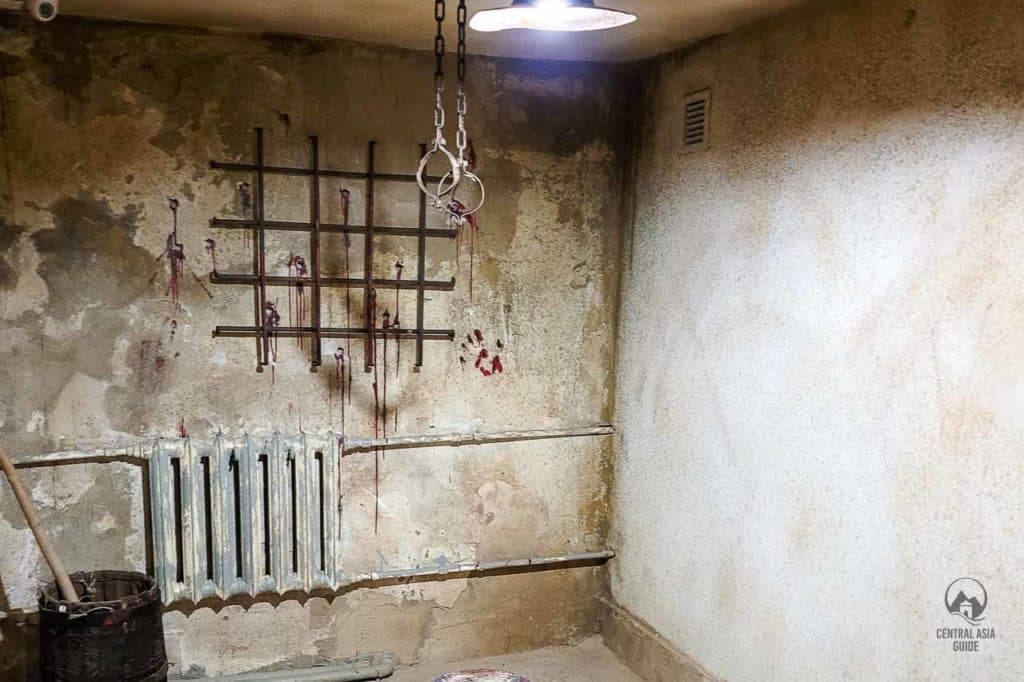
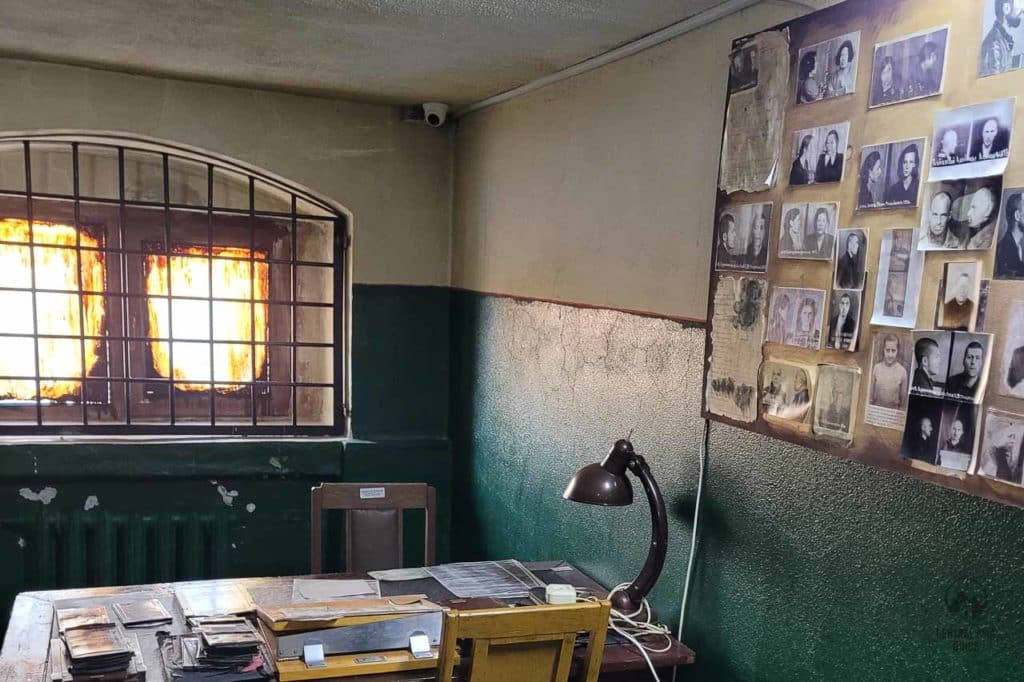
Semipalatinsk Nuclear Test Site
The Semipalatinsk Nuclear Test Site, located in eastern Kazakhstan, is a significant historical landmark and a key site for dark tourism. Established by the Soviet Union in 1949, it served as the primary testing ground for over 400 nuclear tests, profoundly impacting the local environment and the health of nearby populations.
Today, the site offers guided tours, allowing visitors to explore the remnants of this chilling chapter in history, including the underground test sites and memorials dedicated to the victims of nuclear fallout. As awareness of nuclear safety and the consequences of atomic testing grows, the Semipalatinsk Nuclear Test Site stands as a powerful reminder of the past, attracting history enthusiasts, researchers, and travelers interested in dark tourism in Kazakhstan.
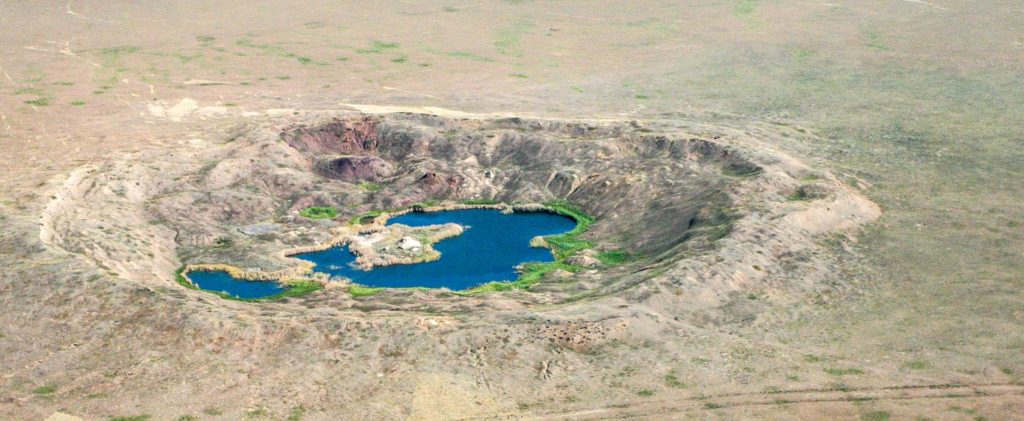
Chagan Lake (Nuclear test site)
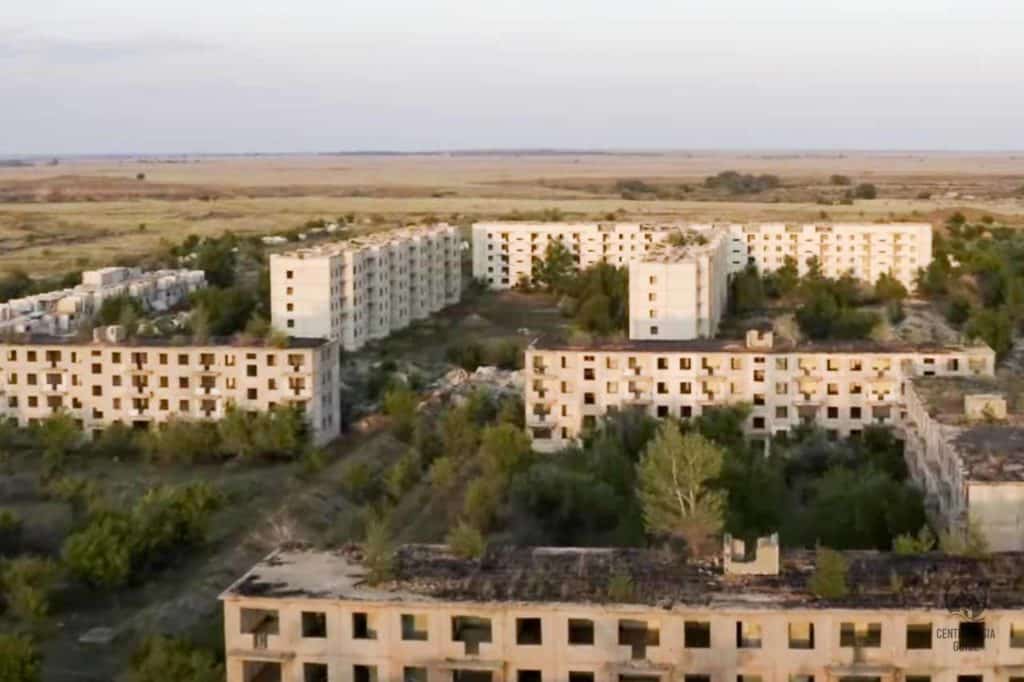
Chagan, also known as the “Atomic Lake,” is a significant dark tourism destination in Kazakhstan, symbolizing the devastating impact of nuclear testing during the Soviet era. Located in the Semipalatinsk Test Site region, Chagan was created in 1965 when a 140-kiloton nuclear bomb was detonated to form an artificial reservoir as part of Soviet experiments with peaceful nuclear explosions. The result was a massive crater that filled with water, forming a lake now known for its eerie and unnatural origins.
Visitors to Chagan are drawn by its haunting legacy, serving as a reminder of the destructive power of nuclear weapons. The area, despite being largely abandoned, holds a grim allure for those interested in the darker chapters of history.
As part of Kazakhstan’s broader nuclear testing history, which includes Semipalatinsk, Chagan offers insight into the environmental and human tolls of Cold War-era experiments, making it a compelling dark tourism site for history enthusiasts and those curious about the consequences of nuclear technology.
ALZHIR Gulag Museum
The ALZHIR Memorial, located near Astana (Nur-Sultan), Kazakhstan, is a poignant site dedicated to the memory of the victims of political repression during the Stalin era. ALZHIR, which stands for “Akmola Camp for Wives of Traitors to the Motherland,” was a notorious women’s prison camp where thousands of women were imprisoned for being related to individuals deemed enemies of the state.
In modern day, the memorial serves as a vital historical site and a chilling reminder of the human rights abuses that occurred in Kazakhstan. Visitors to the ALZHIR Memorial can explore exhibits detailing the camp’s history and the stories of those who suffered, making it an essential destination for those interested in dark tourism and the history of political repression in Central Asia. The memorial not only honors the memories of these women but also fosters awareness of the importance of human rights and justice, attracting historians, educators, and tourists alike.
Kolyma River and the Gulag Archipelago
While not located within Kazakhstan’s borders, the Kolyma River region in Russia is closely associated with Kazakhstan’s history, as many Kazakhs were sent to the infamous Gulags. This area symbolizes the extreme repression and harsh conditions faced by political prisoners, drawing interest from those studying Soviet-era atrocities.
Zhezkazgan
Zhezkazgan, a city in central Kazakhstan, is steeped in the dark history of Soviet industrialization and labor camps, making it a unique destination for dark tourism enthusiasts. Originally founded in the 1920s as a mining town, Zhezkazgan became a center for copper mining and industrial production, playing a crucial role in the Soviet economy. However, the city’s past is marked by harsh labor conditions and the exploitation of workers, many of whom were political prisoners sent to labor camps during the Stalin era.
During the Soviet Union’s industrialization campaign, Zhezkazgan was rapidly developed to extract copper and other minerals. This led to the establishment of labor camps in the surrounding areas, where prisoners endured grueling conditions. The forced labor system not only contributed to the region’s economic growth but also left a lasting impact on the local population and environment.
Like many other cities in Kazakhstan, Zhezkazgan was near labor camps that held political dissidents, intellectuals, and ordinary citizens accused of anti-Soviet activities. The harsh realities faced by inmates included extreme work hours, inadequate food, and brutal treatment from guards. Many prisoners did not survive their sentences, and their stories have become
Turists visiting Zhezkazgan can explore the remnants of labor camps and mines that were once sites of suffering. Guided tours often provide insights into the harsh realities of life in these camps and the broader context of Soviet repression. Some sites may include remnants of camp buildings, barracks, and artifacts left behind by the inmates. Local museum in Zhezkazgan often feature exhibits dedicated to the city’s industrial history and the impact of the labor camp system. It can provide valuable information about the lives of the workers and prisoners, showcasing photographs, documents, and personal stories that reflect the human cost of Soviet industrialization.
Temirtau
Temirtau, is a prominent dark tourism destination, known for its ties to Soviet-era industrialization and steel production. The city is home to one of the largest metallurgical plants in Central Asia, and its industrial past reveals the harsh working conditions faced by laborers during the Soviet period. Visitors are drawn to Temirtau to explore the environmental degradation and remnants of Soviet industry, highlighting the darker side of rapid industrial progress.
Temirtau also holds historical significance due to the worker uprising in the 1950s, where laborers protested poor conditions and shortages, leading to a brutal Soviet crackdown. This history, combined with the environmental impact of heavy industry, makes Temirtau a key location for those interested in dark tourism, offering a sobering look at the cost of industrialization in Kazakhstan.
Baikonur Cosmodrome
The Baikonur Cosmodrome is one of the most significant and haunting dark tourism destinations, offering an in-depth look into the Soviet Union’s space exploration history. As the world’s oldest and largest space launch facility, Baikonur played a central role in the Cold War-era space race, including launching the first human, Yuri Gagarin, into space in 1961. However, beyond its groundbreaking achievements, Baikonur is also marked by secrecy, tragedy, and deadly accidents. Visitors are drawn to its hidden history, including the infamous Nedelin Catastrophe of 1960, a rocket explosion that killed over 100 people. The secrecy that surrounded such disasters for decades adds to the site’s creepy and somber atmosphere, making it a compelling destination for those interested in both space exploration and its darker consequences.
Today, the Baikonur Cosmodrome serves as a powerful reminder of the Soviet Union’s ambition and the human costs associated with its space program. The site features Soviet relics like unused rockets and launch pads, preserved in time, evoking the tense geopolitics of the Cold War. Tourists can visit museums, witness modern rocket launches, and explore facilities that highlight both the triumphs and tragedies of the Soviet space era. For dark tourism enthusiasts, Baikonur combines a fascinating mix of technological achievement and historical sorrow, offering a unique experience that taps into the hidden stories of space exploration in Kazakhstan.
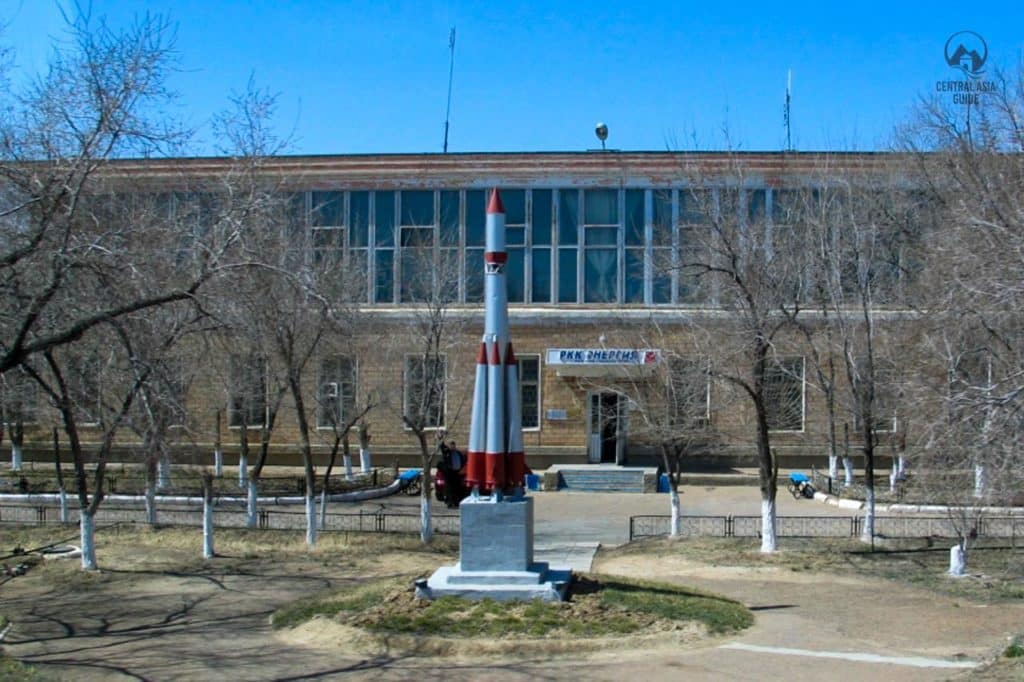

Dark Tourism in Uzbekistan
Aral Sea
Moynaq has become a focal point for dark tourism in Uzbekistan, attracting those interested in exploring the tragic consequences of human impact on nature. The Ship Graveyard, located in the former seabed, is one of the most iconic landmarks of the disaster. Visitors can also explore the Moynaq Museum, which documents the history of the Aral Sea and the collapse of the local fishing industry. For travelers seeking to understand the full scope of the environmental catastrophe, Moynaq offers a stark and moving experience that highlights the fragility of ecosystems when exploited for short-term gains. This makes it a significant stop for those interested in ecological dark tourism and the history of Soviet Central Asia.
Tashkent's Museum of Repression

The Museum of Victims of Political Repression displays a sobering look into the oppressive history of the Soviet era. The museum, located near the Tashkent TV Tower, commemorates the thousands of people who were persecuted, imprisoned, or executed during Stalin’s Great Purge and other repressive periods in Soviet history.
Visitors to the museum can explore exhibits that document the harsh realities faced by political dissidents, intellectuals, and ordinary citizens who were unjustly accused of crimes against the state. Artifacts, photographs, personal letters, and official documents tell the stories of those who suffered under the Soviet regime’s brutal repression.
For travelers interested in dark tourism in Central Asia, the museum provides a deep insight into Uzbekistan’s tragic past, revealing the human cost of totalitarianism. The Tashkent Museum of Repression is not only a place of historical reflection but also a reminder of the resilience of the Uzbek people in the face of systemic oppression. Its exhibits serve as a powerful educational experience, making it a meaningful stop for those seeking to understand the dark chapters of Soviet history and its impact on Uzbekistan.
Islam Karimov Museum
The Islam Karimov Museum, located in Tashkent, Uzbekistan, holds significance as a site of dark tourism due to its association with the former authoritarian leader of Uzbekistan, Islam Karimov, who ruled the country from 1989 until his death in 2016. While the museum itself is intended to commemorate his life and political legacy, it represents a period marked by widespread human rights abuses, suppression of dissent, and authoritarian control.
For dark tourism enthusiasts, the museum offers a glimpse into the complex and often controversial legacy of Karimov’s regime. Many visitors are drawn by the curiosity to understand the contrast between the museum’s glorification of Karimov’s leadership and the darker aspects of his rule, such as the repression of political opponents, limitations on free speech, and the violent crackdown on protests, most notably the 2005 Andijan massacre. The museum thus serves as a site of reflection on the complexities of leadership, power, and the lasting effects of autocratic rule in Uzbekistan’s recent history.
Dark Tourism in Turkmenistan
Turkmenistan, is known for its repressive regime and a unique cult of personality surrounding its former leader, Saparmurat Niyazov, also known as Turkmenbashy or “father of all Turkmen,”. Niyazov implemented bizarre policies, including renaming days of the week and months after himself and making his book, the “Ruhnama,” mandatory reading. His reign was characterized by extreme political repression, lack of freedom, and lavish displays of wealth funded by the country’s oil and gas reserves, all of which serve as a stark backdrop for those drawn to the darker aspects of Turkmenistan’s history. This autocratic ruler, who led from the Soviet era until his death in 2006, created an eccentric cult-like atmosphere.
Ashgabat
Ashgabat, the capital of Turkmenistan, presents a unique angle for dark tourism, in contrast its grandiose architecture with the remnants of its oppressive past. Today, visitors can explore Ashgabat, the capital city that reflects the remnants of Niyazov’s rule through its monumental architecture and his once-ubiquitous image, now increasingly replaced by that of his successor, Gurbanguly Berdymukhamedov.
The city boasts peculiar attractions, including golden statues and bizarre monuments that continue to fascinate dark tourism seekers. Moreover, the recent transition to a new president, Serdar Berdymukhamedov, raises questions about the future of the regime and whether the cult of personality will persist or evolve. As Turkmenistan remains a country steeped in contradictions, combining the allure of ancient Silk Road relics with the shadow of authoritarian rule, it presents a compelling destination for those interested in the complex interplay of power, history, and culture.

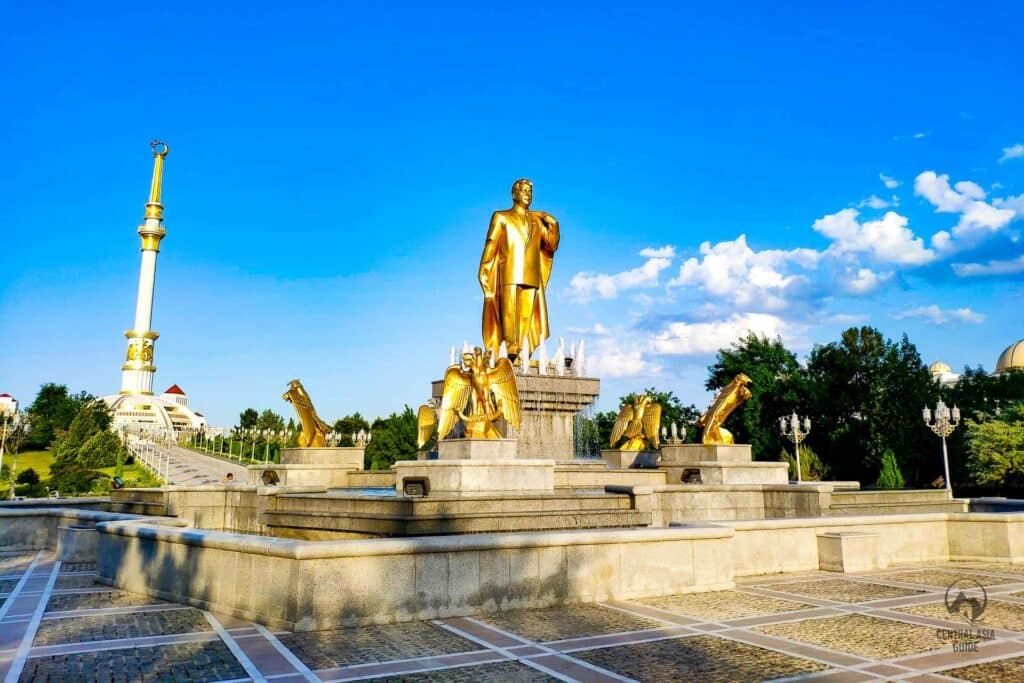
Darvaza Gas Crater
The Darvaza Gas Crater, also known as the “Door to Hell,” is a unique and chilling landmark in Turkmenistan that attracts dark tourism enthusiasts. This fiery pit, created in 1971 when a Soviet drilling rig accidentally collapsed into an underground cavern filled with natural gas, has been burning continuously ever since. The resulting crater, with its intense flames and glowing orange hues, evokes a sense of both wonder and eeriness, drawing visitors who are intrigued by its dramatic and dangerous appearance.
From a dark tourism perspective, the Darvaza Gas Crater symbolizes the consequences of human intervention in nature and the industrial exploitation of fossil fuels. Its fiery landscape serves as a reminder of the environmental and safety risks associated with gas extraction and the potential dangers of the energy industry. For many, the crater represents a blend of beauty and horror, making it a fascinating destination for those drawn to unusual and unsettling sites. Furthermore, the remote and desolate setting adds to the overall sense of isolation and intrigue, reinforcing its status as a must-visit location for dark tourism in Central Asia. Consequently, the Darvaza Gas Crater stands out in the dark tourism landscape due to its captivating yet ominous presence, highlighting the intersection of human activity, environmental impact, and the mysteries of the natural world.

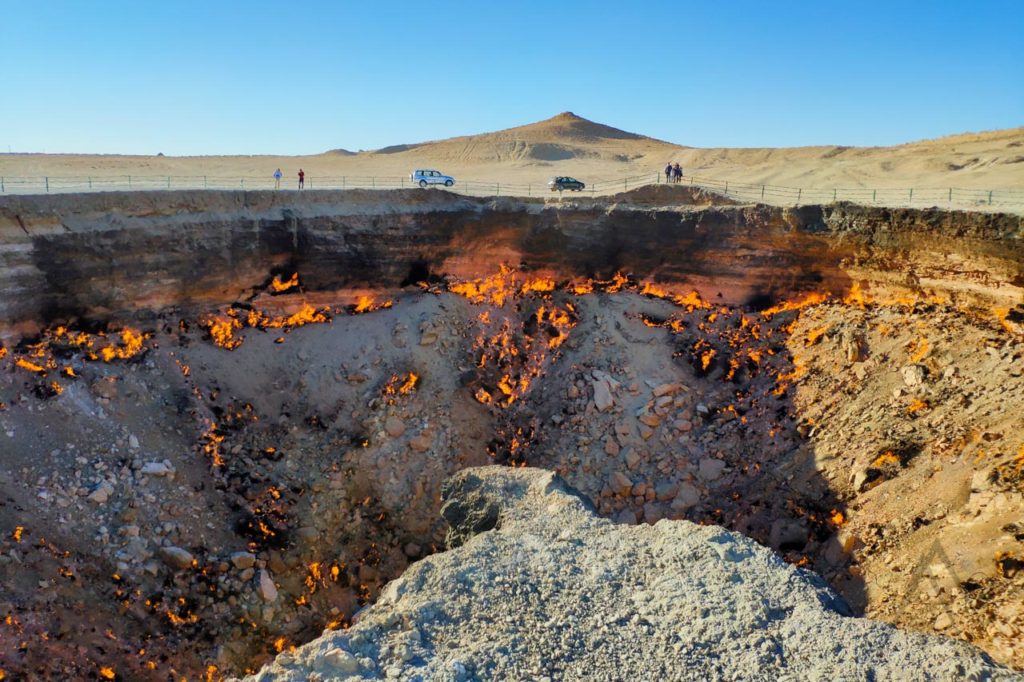
Dark Tourism in Kyrgyzstan
Mailuu-Suu
Mailuu-Suu, a town in southern Kyrgyzstan, is one of the most haunting locations for dark tourism due to its radioactive history. Once a major uranium mining center during the Soviet era, Mailuu-Suu was a key supplier of uranium for the USSR’s nuclear programs. The mines and processing plants extracted vast amounts of uranium ore, leaving behind radioactive waste stored in poorly maintained containment sites. When the Soviet Union collapsed, these operations were abandoned, leaving the town to face serious environmental and health risks.
The remnants of this uranium industry and the ongoing environmental challenges make Mailuu-Suu a dark tourism hotspot. Visitors are drawn by the opportunity to witness a town affected by radioactive pollution firsthand, with mine sites, crumbling infrastructure, and old waste dumps dotting the landscape.
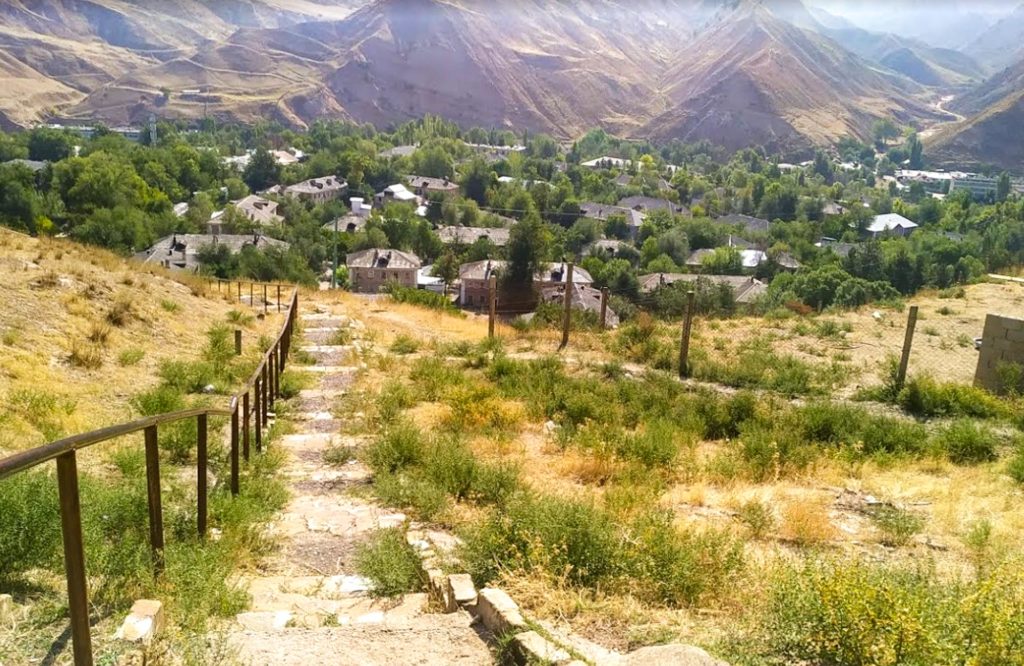
The tailing sites, which are large mounds of radioactive waste, pose potential dangers, especially during natural disasters like earthquakes or floods that could cause radioactive contamination to spread into surrounding areas.
This risky history has led to Mailuu-Suu being ranked as one of the most polluted places in Central Asia. For dark tourists, it’s an unsettling yet intriguing destination that reveals the darker side of industrial and environmental neglect. Exploring Mailuu-Suu provides a sobering view of the environmental costs of nuclear ambition, offering a rare chance to confront the long-lasting impact of radioactive contamination on both people and landscapes.
Tash-Komur
Tash-Kömür, a small town once central to the Soviet mining industry, has become a compelling site for dark tourism due to its haunting Soviet legacy and the environmental toll of its coal mining past. Once a thriving industrial hub, Tash-Kömür rapidly urbanized to support the USSR’s coal demands. However, after the Soviet Union’s collapse, the town’s mining industry crumbled, leaving behind abandoned mines, factories, and empty Soviet-era buildings that now evoke an eerie, ghost-town atmosphere, capturing the attention of dark tourism enthusiasts.
The environmental degradation left in the wake of Soviet mining operations is another draw for visitors. Decades of unregulated mining and waste disposal practices have left the soil and water contaminated, scars of rapid industrial growth that reflect a bleak environmental legacy. The visible pollution and decaying industrial landscape create a striking backdrop that dark tourists seek, as it highlights the consequences of unchecked industrialization. Tash-Kömür illustrates the socio-economic impacts of industrial collapse on small towns. After the mines closed, the economy plummeted, leaving the town struggling with widespread poverty and prompting younger generations to seek opportunities elsewhere. This combination of abandoned infrastructure, environmental scars, and socio-economic challenges gives visitors a raw look at the human cost of industrial and political shifts, especially in forgotten Soviet towns like Tash-Kömür.
Today, Tash-Komur is a quieter place, although it holds cultural and historical interest, especially as a gateway to destinations like the Fergana Valley and the Sary Chelek Nature Reserve. Despite modern challenges, the town remains a reminder of Kyrgyzstan’s industrial history and energy sector importance.

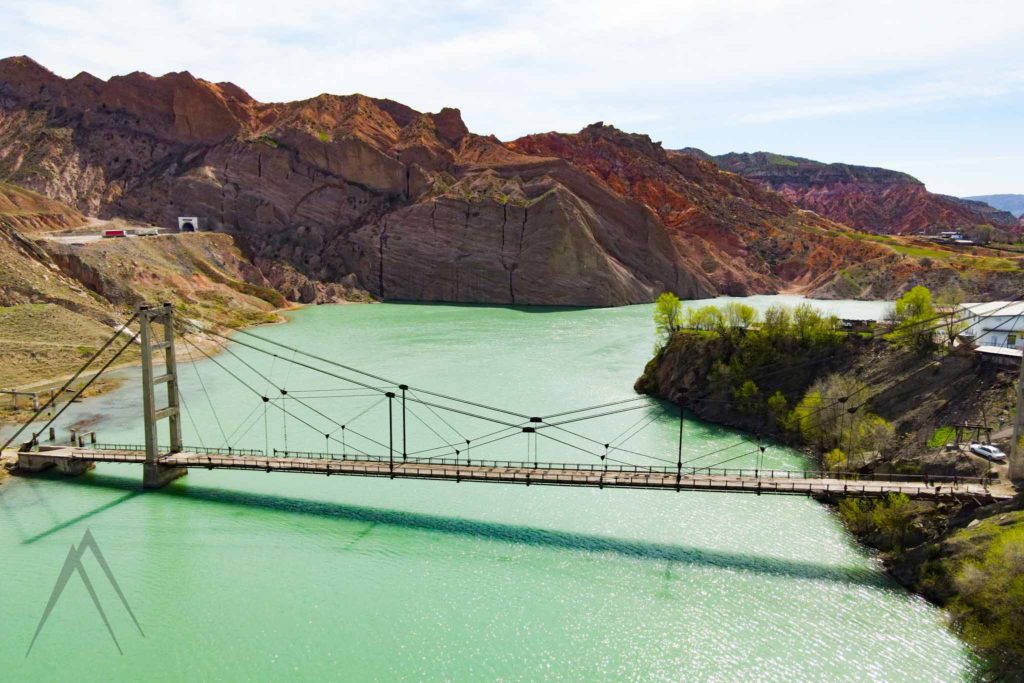
Enilchek
Enilchek, a ghost town near Karakol in Kyrgyzstan’s Issyk-Kul region, offers a haunting and fascinating destination for dark tourism. Once a bustling mining town during the Soviet era, Enilchek was established to support uranium and other mineral extraction efforts in the remote Tian Shan mountains. However, with the Soviet Union’s collapse in the early 1990s, the town’s industries were abruptly abandoned, leading to a rapid depopulation and leaving the town deserted almost overnight. Today, Enilchek remains frozen in time, filled with crumbling Soviet-era buildings, empty factories, and remnants of daily life that seem almost eerily preserved.
The desolation and lingering evidence of former Soviet life make Enilchek an intriguing place for dark tourism. Visitors come to explore its decaying structures, including apartment blocks, an abandoned hospital, and empty schools, all set against a stark mountainous backdrop. The contrast between the natural beauty of the rugged landscape and the town’s eerie, deserted atmosphere creates a powerful sense of isolation and loss, which is a central draw for dark tourism enthusiasts.
Another aspect that attracts dark tourists is Enilchek’s connection to uranium mining, which has left parts of the area with potential radioactive contamination. This legacy adds a layer of danger and intrigue, as it evokes the darker side of industrial history and the environmental costs of uranium extraction. Enilchek stands as a testament to the effects of rapid industrialization and decline, offering visitors a unique, somber perspective on history, nature, and the ghostly remnants of a bygone era in Central Asia.


Tajikistan
Asht Salt lake
Asht Salt Lake, nestled in Tajikistan’s remote Sughd Region near the town of Asht, is a captivating site for dark tourism fans. Known for its high salt concentration and stark, lifeless landscape, the lake draws visitors seeking eerie, otherworldly scenery. With shores crusted in white salt deposits and a distinct sulfurous smell in the air, Asht Salt Lake offers a haunting beauty that sets it apart from more traditional tourist sites.
Local legends add to the lake’s mystery, with tales of spirits and curses surrounding the area. These stories, combined with the lake’s desolate surroundings, make Asht Salt Lake a magnet for photographers and adventure-seekers interested in unique, isolated destinations. The lake’s surreal, monochromatic views make it a must-visit for dark tourism in Central Asia, offering both a visual spectacle and a chilling, memorable experience.
If you’re planning to explore Asht Salt Lake, be sure to pack essentials, as the area’s isolation and high salinity can make conditions harsh. This mysterious destination provides the perfect escape for travelers seeking an off-the-beaten-path adventure in a natural, ghostly setting, blending Central Asia’s rugged landscapes with a touch of the supernatural.

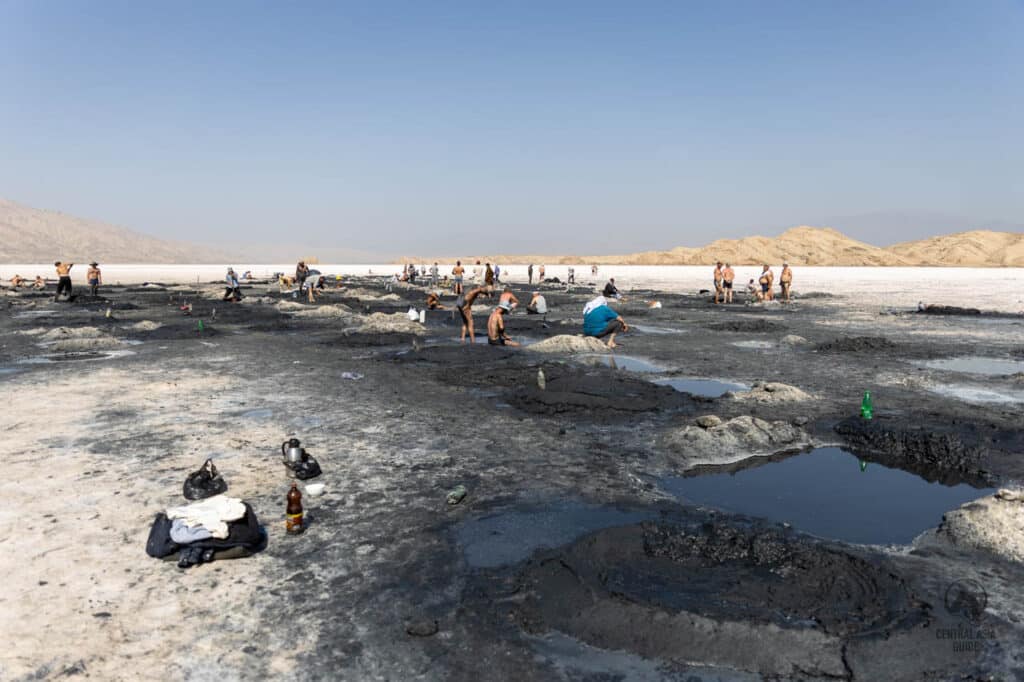
Page updated: 15.10.2024